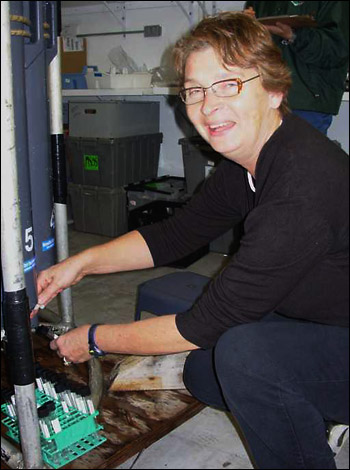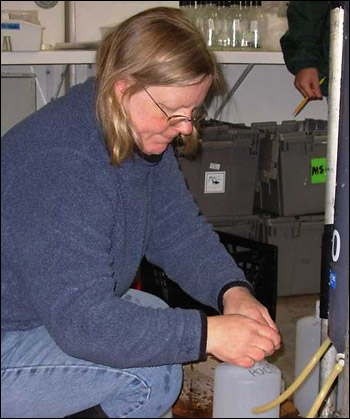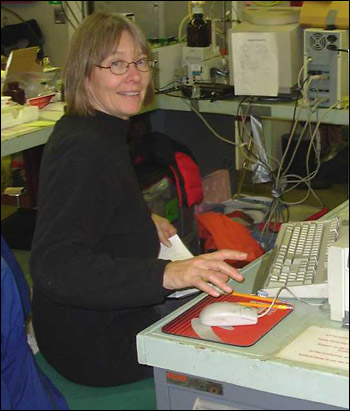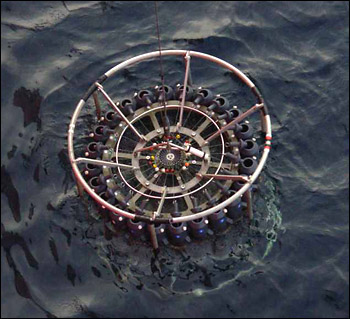Please note: You are viewing
the unstyled version of this website. Either your browser does not support CSS
(cascading style sheets) or it has been disabled. Skip
navigation.
Linda White (IOS)August 22, 2006
Aboard the Louis, nutrient analysis is performed on a three channel Technicon Autoanalyser. A sample probe draws up approximately 0.5- 1.5 ml of seawater and an assortment of chemical reagents are introduced to develop a colour complex with each target nutrient. The intensity of colour is proportional to the amount of nitrate, silicate or phosphate present. Samples are taken at many depths at a station. A story of water structure is built around the results we get from the analyses or profile with depth. And added to the other parameters analysed, i.e. oxygen, salinity, alkalinity and temperature, describe where the layers of different waters originate. Much preparation goes into sample analyses on board the Louis. Equipment must be tested, chemicals are pre-weighed and spare parts for equipment are packed prior to departure. Hundreds of sample bottles, test tubes and filters are cleaned and baked and stowed in metal boxes for a safe trip to the Arctic. We try to assist everyone when and where needed to get the task done. Sometimes Jane Eert (IOS) needs methanol to clean the connectors on the CTD or Nes Sutherland (IOS) will require tubing of a very small inside diameter. Usually they can find it in the nutrient supplies. Spare parts are important! A portable Nanopure water purifying system is plumbed into the ship's distilled water supply. Any of the many analyses performed on board has access to this ultra pure water to prepare standards and for cleaning. Today I have a couple of stations worth of nutrients to analyse and used tubes to clean. There is always something to do in the nutrient lab. Last updated: October 7, 2019 | |||||||||||||||||||||
Copyright ©2007 Woods Hole Oceanographic Institution, All Rights Reserved, Privacy Policy. | |||||||||||||||||||||






